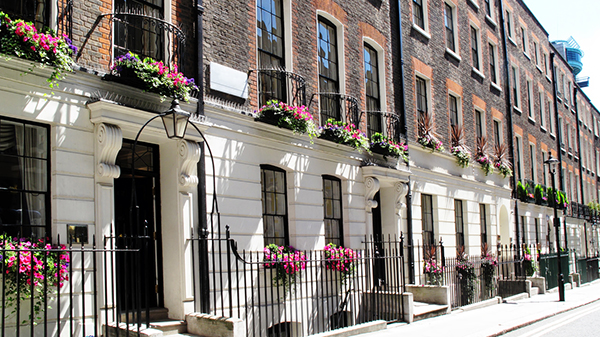Building preservation policies cost English households £500 million in energy bills every year, study finds

Residents of Listed Buildings and Conservation Areas miss out on saving up to £240 on annual energy bills because the preservation policies make it harder to reduce energy use, according to a new study published today (16 October 2017) by the Grantham Research Institute on Climate Change and the Environment at the London School of Economics and Political Science (LSE).
The preservation policies may also make it more difficult to achieve ambitious targets, set out in the Government’s Clean Growth Strategy last week, to improve energy efficiency of homes, which account for 13% of the UK’s annual emissions of greenhouse gases.
An analysis by Dr Charles Palmer, along with Professor Christian Hilber and Dr Ted Pinchbeck, finds that energy use in homes protected by preservation policies has fallen by less than the national average because the uptake of energy-saving measures such as UPVC windows and cavity wall insulation in these homes is lower than in comparable unprotected homes.
Using data for domestic energy use in England from 2006 to 2013, the analysis finds that £3.8 billion savings could have been made on energy bills over the period – approximately £240 per year for each of the 2 million homes designated as Listed Buildings or located in Conservation Areas – if energy consumption had dropped in these areas at the same rate as in other neighbourhoods.
The analysis shows that, in most neighbourhoods, for every 10% increase in the price of energy, energy consumption decreased by 4.8 percentage points. However, in neighbourhoods with widespread preservation, where 70% of homes are within Conservation Areas or 10% of homes are Listed Buildings, the same 10% price increase reduced energy consumption by only 3.4 percentage points – a roughly 30% smaller reduction in energy consumption.
Data on home energy efficiency improvements showed that uptake of energy-saving measures is lower in areas where many properties are subject to preservation policies. The researchers say that this could be because investing in energy efficiency technologies like UPVC windows, new boilers or cavity wall insulation tends to be more expensive or is limited by legal restrictions.
In the analysis, England was split into neighbourhoods to calculate energy consumption in each area. The researchers carefully controlled for income and other factors, such as the age and type of the housing stock and the geographical location of the neighbourhood, so that they could compare different areas and estimate the impact of preservation policies on energy consumption.
The researchers calculated that the lost energy savings were equivalent to the emission of 20.1 million tonnes of carbon dioxide between 2006 and 2013. Using government ‘marginal abatement costs’― which give a value for emitting an extra tonne of carbon dioxide― the researchers calculated that the cost in England amounted to approximately £1.23 billion between 2006 and 2013.
Dr Charles Palmer, Associate Professor at the LSE and Associate of the Grantham Research Institute and co-author of the paper said:
“Preservation policies play an important role in protecting our historic buildings but our research shows that there is a trade-off. The results highlight that preservation policies have inadvertently hindered some households from cutting down their energy use and their bills.”
Dr Palmer added: “The UK’s residential sector, which makes up 13% of UK emissions, must decarbonise if the UK is to meet ambitious emission reduction targets. The Government’s Clean Growth Strategy plans a number of measures to improve the energy efficiency of our homes but neglects the role of restrictions that make it difficult to achieve this in homes covered by preservation policies. Reducing emissions from homes could become increasingly unrealistic if preservation policies make it costly or even impossible to improve energy efficiency. 10% of the UK’s housing stock is subject to preservation polices so it is a significant issue.
“The solution could be to limit further preservation or possibly reverse some existing designations. A compromise between preservation and improving energy efficiency would also help. For instance, local authorities could relax the rules on the use of certain materials to allow for the installation of energy-efficient windows.”
The results of the study are published today as a working paper, and will be submitted to a journal for publication.
For a copy of the study or for more information about this media release please contact Victoria Druce on +44 (0) 207 107 5865 or v.druce@lse.ac.uk or Bob Ward on +44 (0) 7811 320346 or r.e.ward@lse.ac.uk
NOTES FOR EDITORS
- The Grantham Research Institute on Climate Change and the Environment (https://www.lse.ac.uk/grantham) was launched at the London School of Economics and Political Science in October 2008. It is funded by The Grantham Foundation for the Protection of the Environment (https://www.granthamfoundation.org/).
-ENDS-

